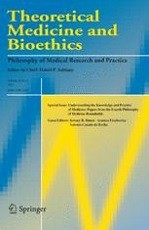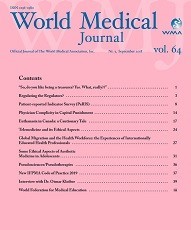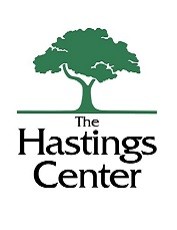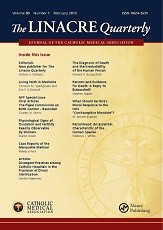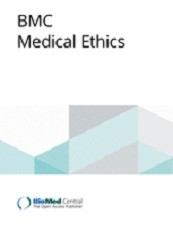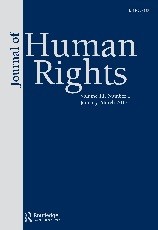Protection of Conscience Project
Abstract
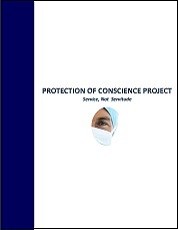
The College of Physicians and Surgeons of Ontario (CPSO) has invited comment on a draft policy and related document, Human Rights in the Provision of Health Services (Human Rights 2022) and Advice to the Profession: Human rights in the Provision of Health Services (Human Rights-Advice 2022). The draft revision updates the current policy through which the CPSO imposed a requirement for “effective referral” for morally contested services. Ontario physicians unwilling to provide a procedure they consider unethical/immoral/harmful are required by the CPSO to make an “effective referral” — to connect a patient with a practitioner willing to do what they refuse to do. The policy survived a constitutional legal challenge. It appears that judicial approbation has become a license to make increasingly oppressive demands on objecting physicians.
In particular, Human Rights 2022 now requires physicians who make effective referrals to follow up and ensure that patients have connected with the practitioner or agency to whom they were referred. If not, physicians are required to take additional steps to bring the connection about. Further, the policy now emphasizes an obligation to provide formal clinical referrals for morally contested services, but anticipates that “many patients” will need physician help to get services even when they can be directly accessed.
Human Rights 2022 forbids physicians to “express” moral judgement about patient beliefs. That is impossible. Both agreement and refusal to provide or collaborate in a service express moral judgement about a service being sought, and implicitly express a similar judgement about a patient’s beliefs.
Ontario physicians are now forbidden to “express” moral judgement about services sought by patients. This contradicts the Canadian Medical Association (CMA) Code of Ethics and Professionalism. It also obstructs physician-patient matching, which is an effective strategy for accommodating patients and physicians and improving health outcomes. Finally, the prohibition amounts to a de facto suppression of physician freedom of conscience, which necessarily entails an expression of moral or ethical judgement about services sought by patients.
A new provision requires physicians to consider patient access to services when making decisions about their scope of practice and clinical competence. This may be intended to pressure physicians to extend their scope of practice/clinical competence to include services to which they object for reasons of conscience. Previously, the CPSO had assured the courts that physicians opposed to making effective referrals could avoid conflicts by changing their scope of practice: from general practice to hair restoration, for example.
Another new passage states that physicians must not “provide false, misleading, confusing, coercive, or incomplete information” about treatment options. The obligation to adhere to principles of informed consent is affirmed by Human Rights 2022 and precludes such conduct, so the pejorative warning is unnecessary. Its location within the document indicates that it is addressed to physicians whose religious or moral beliefs cause them to object to certain procedures. The message conveyed is that these physicians are likely to lie, deceive, mislead and coerce their patients, so an explicit warning is needed. Demeaning innuendos of this kind are condemned by the CPSO in other contexts and considered a form of workplace harassment by the Ontario government.
Three disparate elements of the revised policy are noteworthy.
First: Human Rights 2022 states that physicians must not comply with apparently discriminatory patient requests to be treated by a physician with a specific “social identity,” and it authorizes them to refuse required medical care if the request has made them feel unsafe. In effect, the new provision instructs physicians that they must not comply with patient requests that would facilitate perceived wrongdoing by someone else (i.e., discrimination by the patient). This is exactly the same reasoning applied by physicians who refuse to facilitate euthanasia and assisted suicide by effective referral. Through Human Rights 2022 the CPSO confirms the validity of their reasoning
Second: the policy directs physicians to incorporate policies that appear to be constitutive elements of a particular socio-political doctrine into their practices. Doctrinally defined policies bring doctrinal baggage that may be rejected by physicians who hold a variety of comprehensive religious and non-religious world views. The CPSO has not demonstrated that the socio-political doctrine it intends to impose through Human Rights 2022 is the only one acceptable in Ontario medical practice.
Finally, all physicians working in faith-based hospitals and hospices are required to provide “access to information and care, including effective referrals for services, treatments and procedures that are not provided” in the institution. The direction is clearly intended to subvert the exercise of freedom of religion by religious groups operating healthcare facilities.
Objecting practitioners are typically willing to work cooperatively with patients and others to accommodate patient access to services as long as cooperation does not involve collaboration: an act that establishes a causal connection to or de facto support for the services to which they object. They are usually willing to provide patients with information to enable informed decision-making and contact with other health care practitioners. The distinctions between cooperation and collaboration and providing information vs. providing a service enable an approach that accommodates both patients and practitioners.
The Project recommends that the College adopt a single protection of conscience policy applicable to all services and procedures. This submission includes an example of such a policy. However, should current policy structure be maintained, specific recommendations are made for revisions to Human Rights 2022 to address problematic elements identified in the submission.
TABLE OF CONTENTS
Introduction
I. Defining Terms
II. Providing Health Services (1): The Practice Environment
III. Providing Health Services (2): Physician Expression
IV. Providing Health Services (3): The Duty to Accommodate
V. Providing Health Services (4): The Duty to Provide Services Free from Discrimination
VI. Limiting Services: Clinical Competence/Scope of Practice
VII. Conflict with Physician Conscience/Religion (1): Providing Information
- Medical decision-making
- Issues
- Recommendations
- Impeding information/access
- Issues
- Recommendations
- Dishonest communication
- Issues
- Recommendations
- Summary
VIII. Conflict with Physician Conscience/Religion (2): Effective Referral
- Introduction
- Identifying conflict
- Effective referral
- Unchanged requirements
- Additional requirements
- Additional examples
- Emergencies
- Subversion of freedom of religion
- Issues
- Recommendations
Appendix “A”: Human Rights 2022 and Project Recommendations
- Providing Health Services (1): The Practice Environment
- Providing Health Services (2): Physician Expression
- Providing Health Services (3): The Duty to Accommodate
- Providing Health Services (4): Duty of Non-Discrimination
- Limiting Services: Clinical Competence/Scope of Practice
- Conflict with Physicians Conscience/Religion (1): Providing Information
- Advice to the Profession: Human Rights 2022
